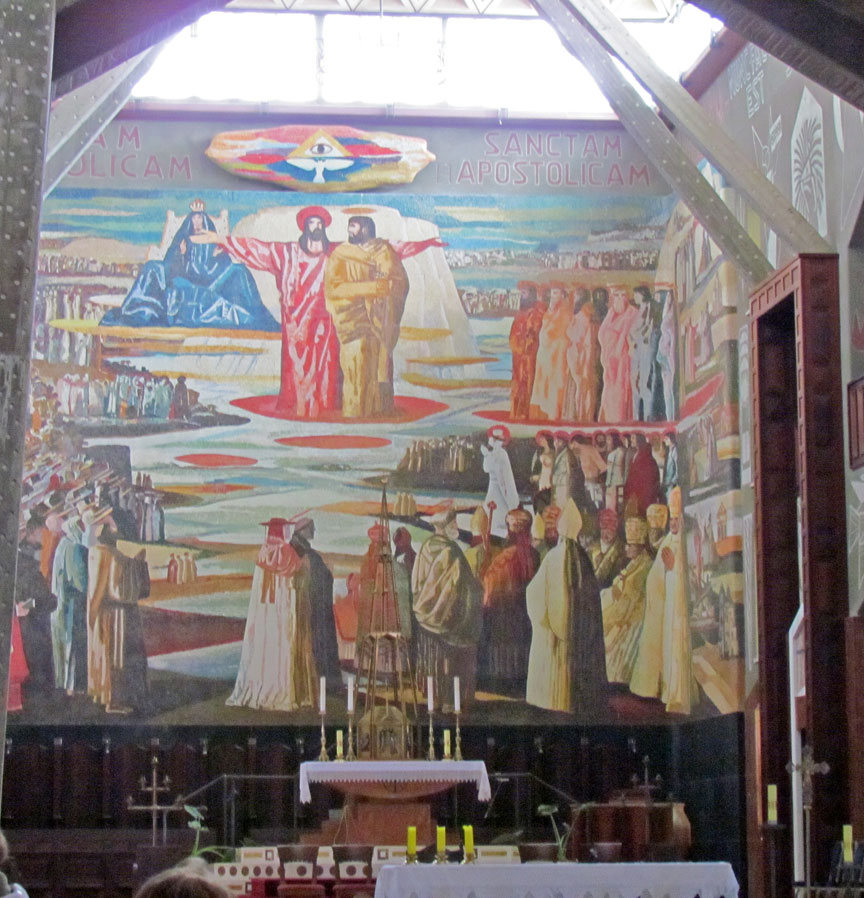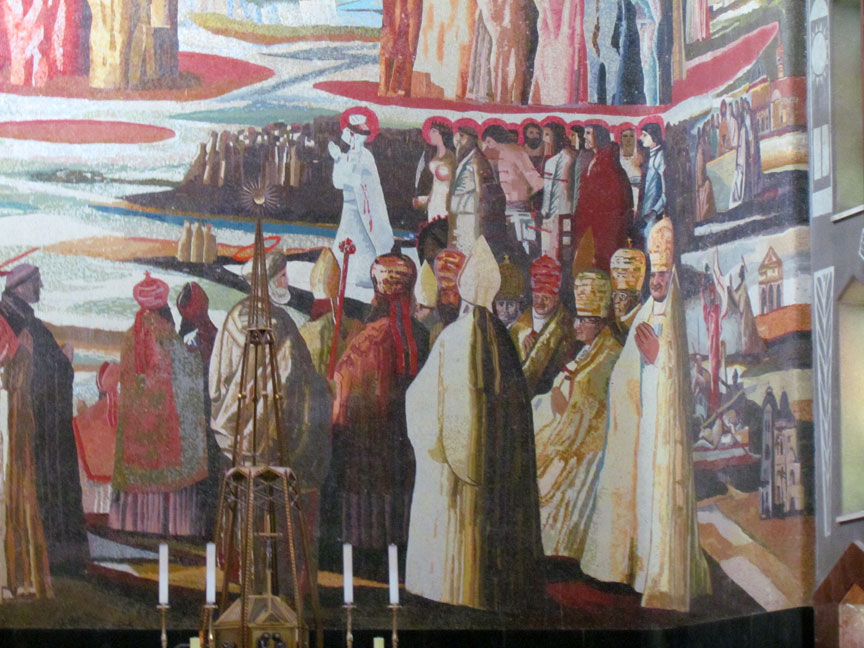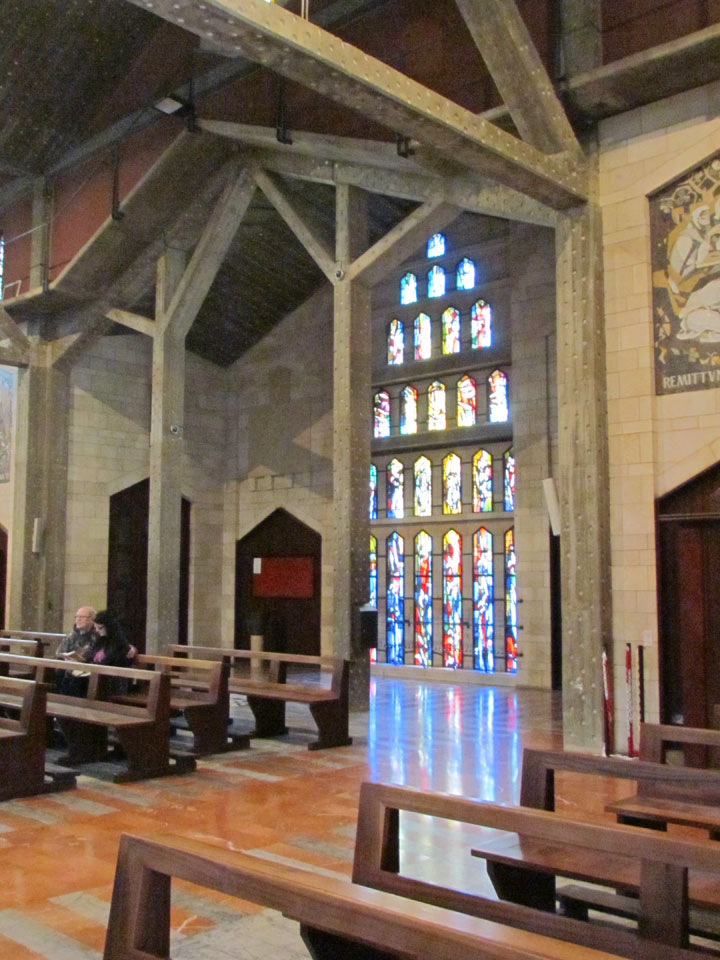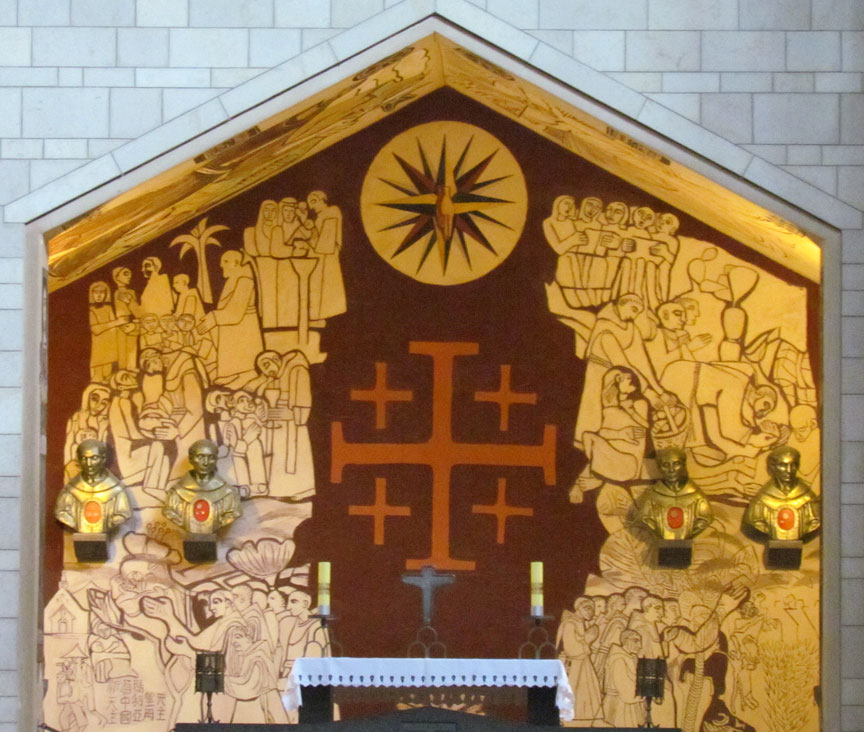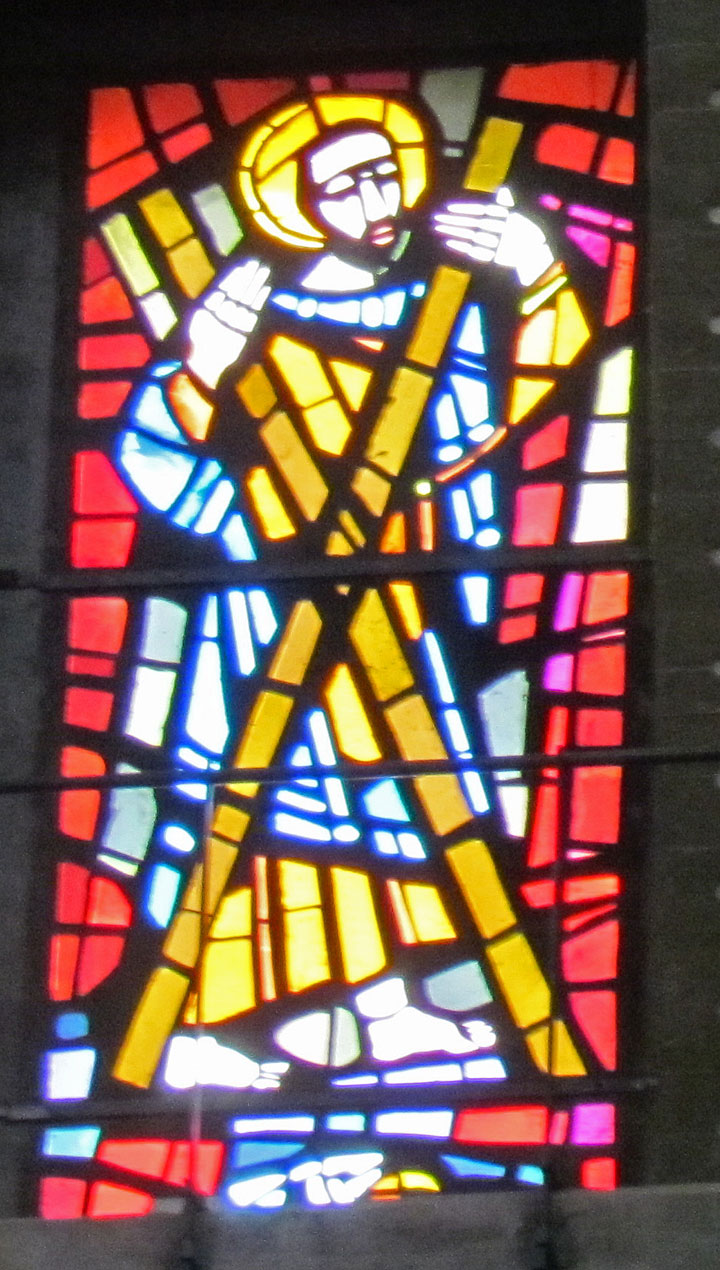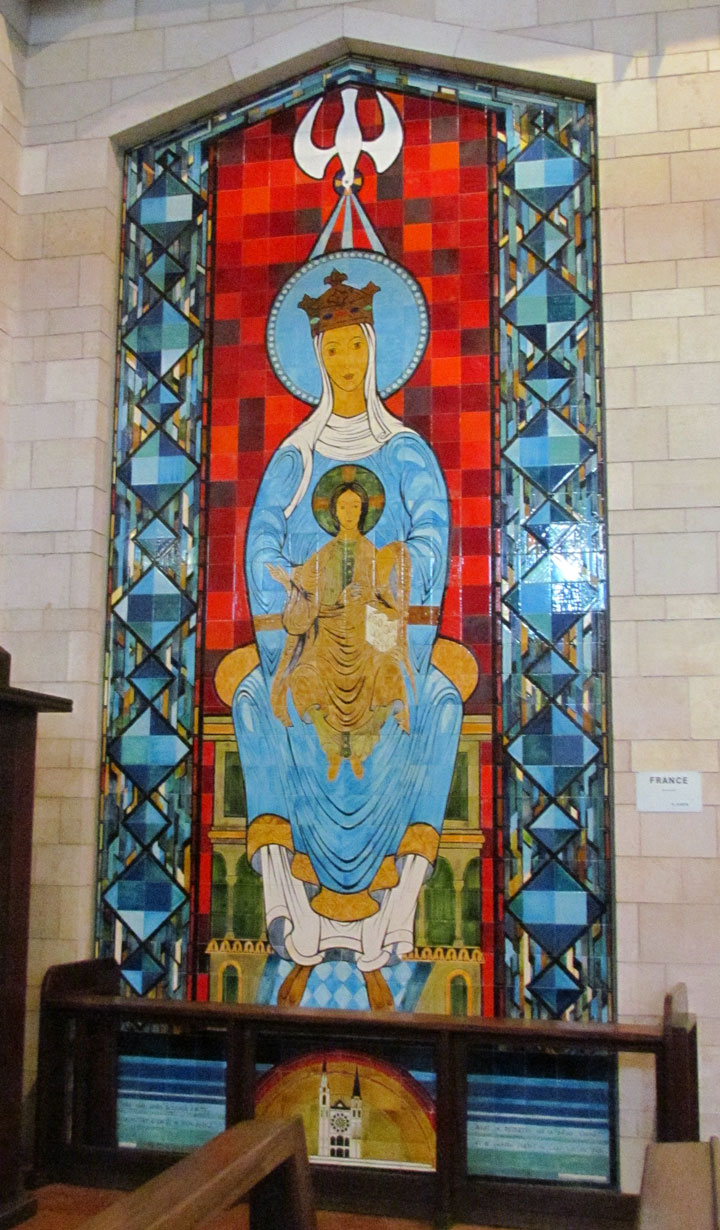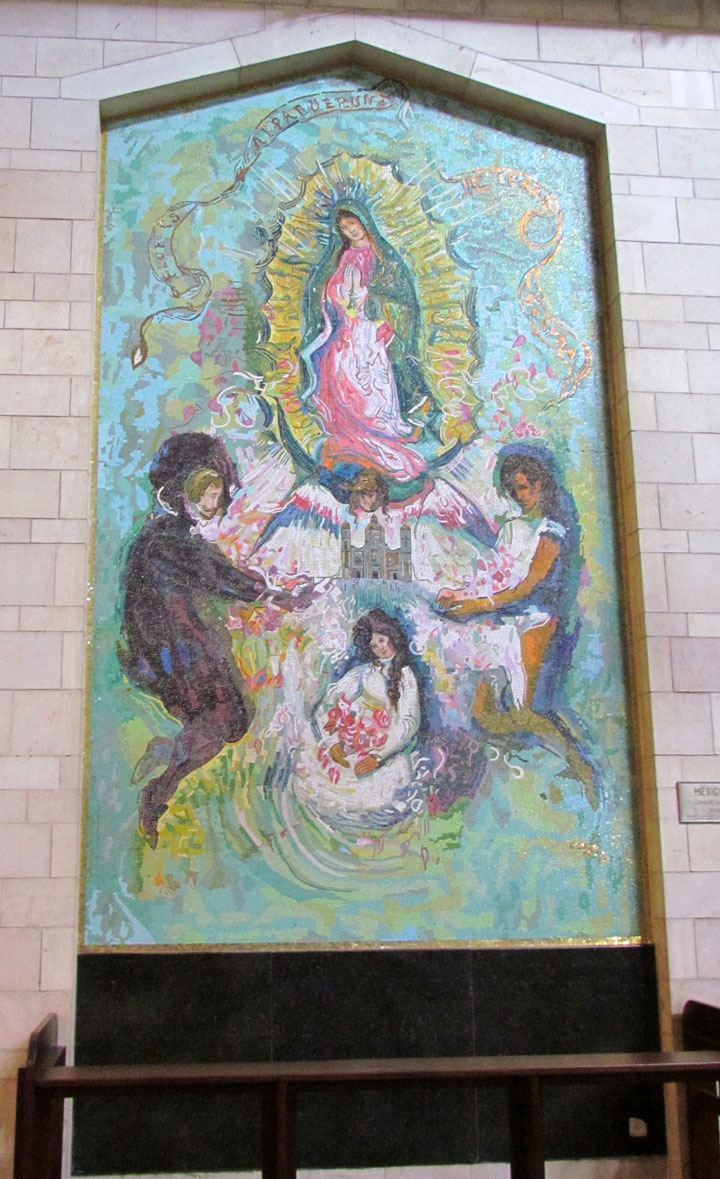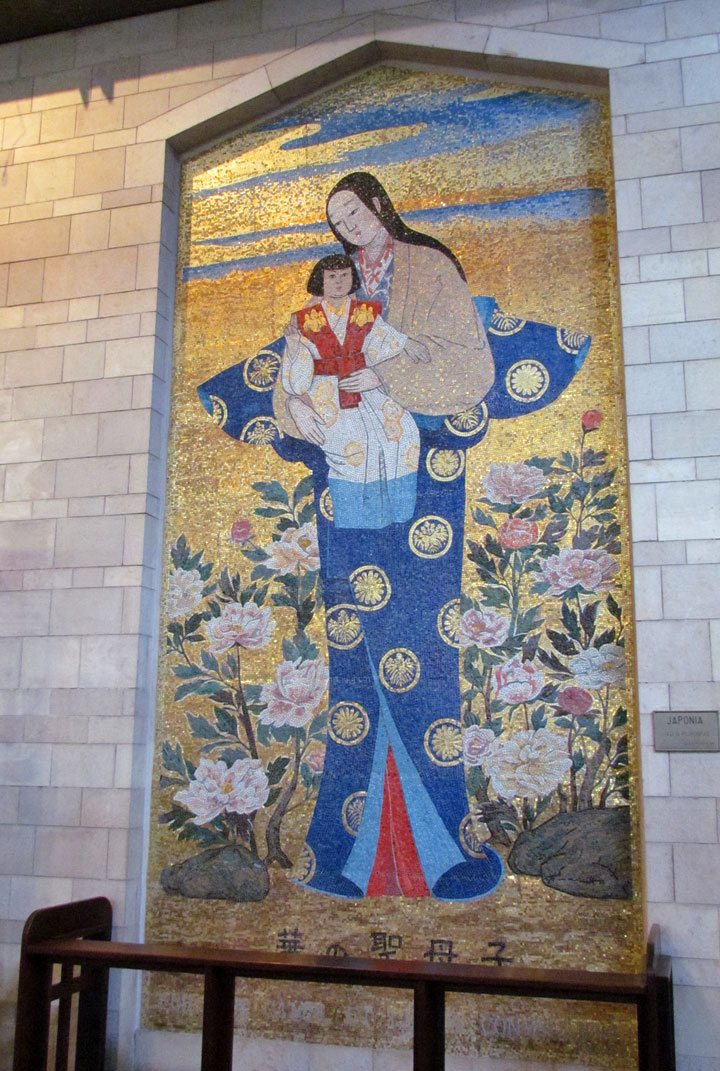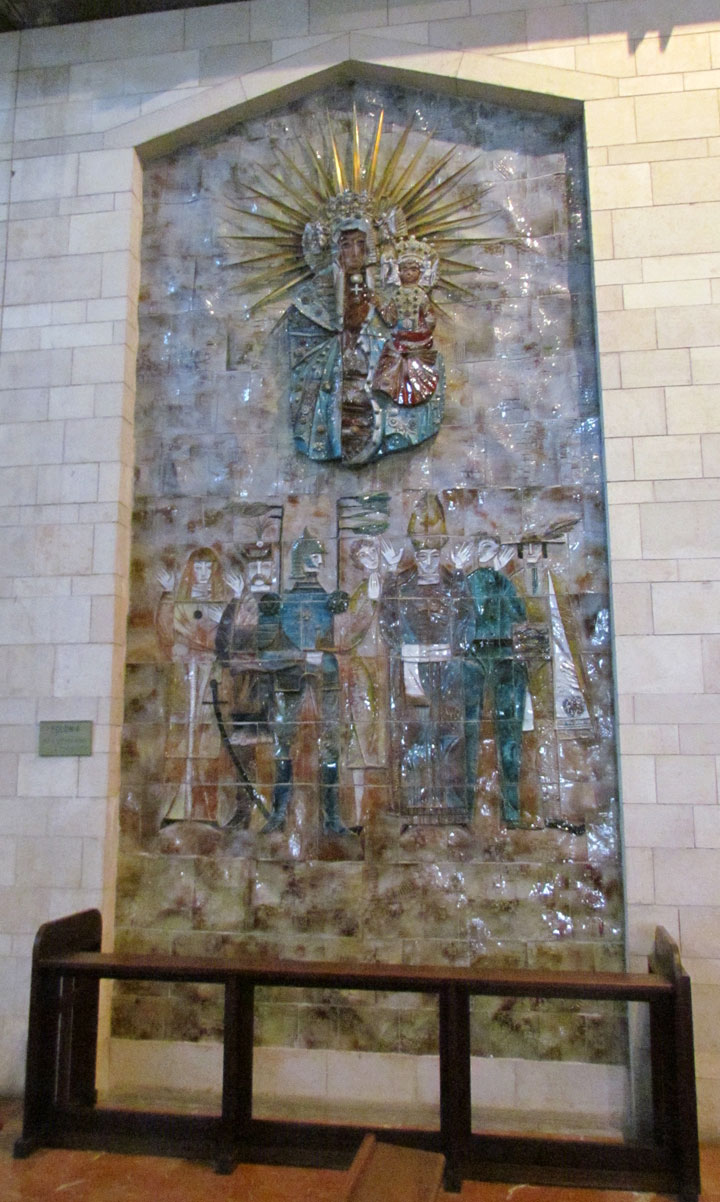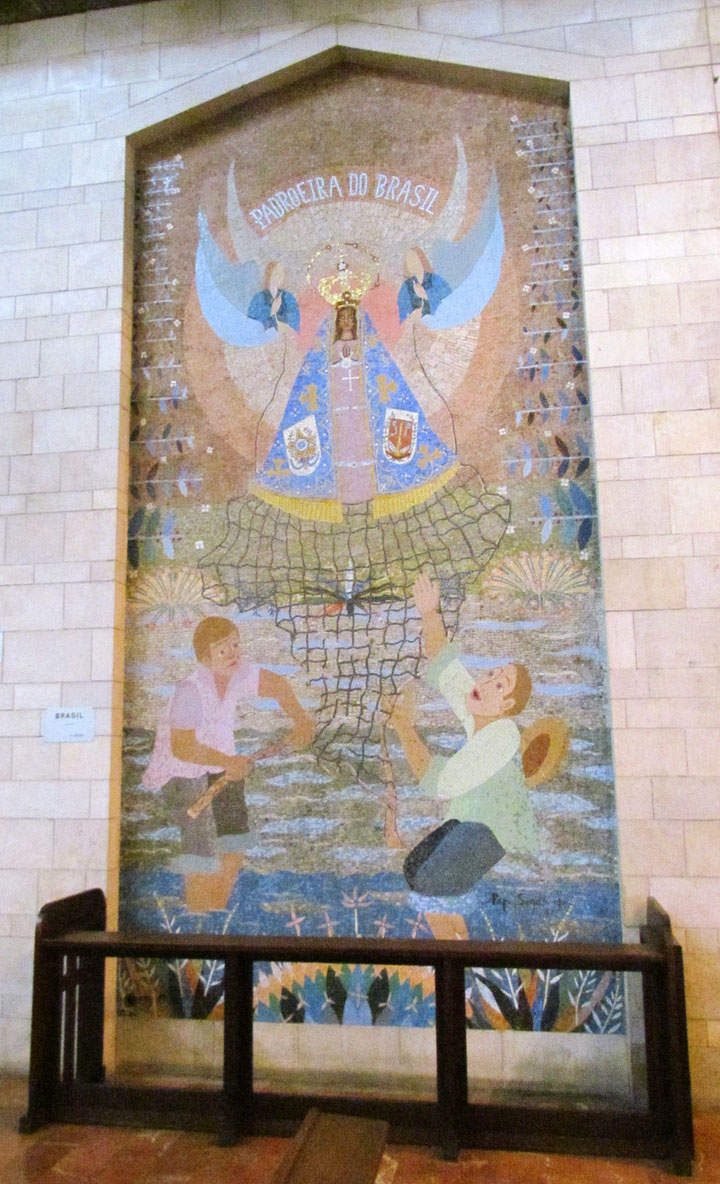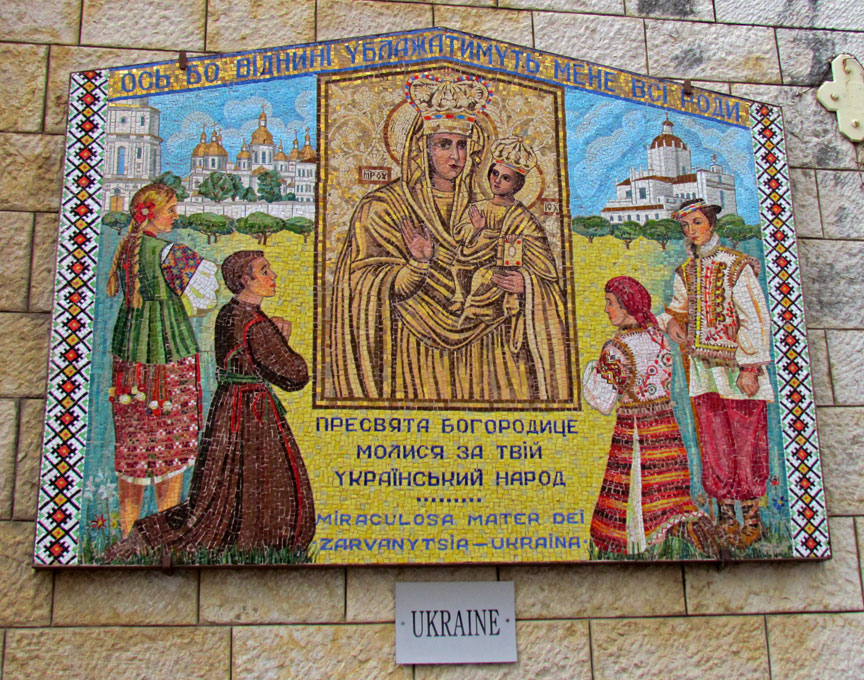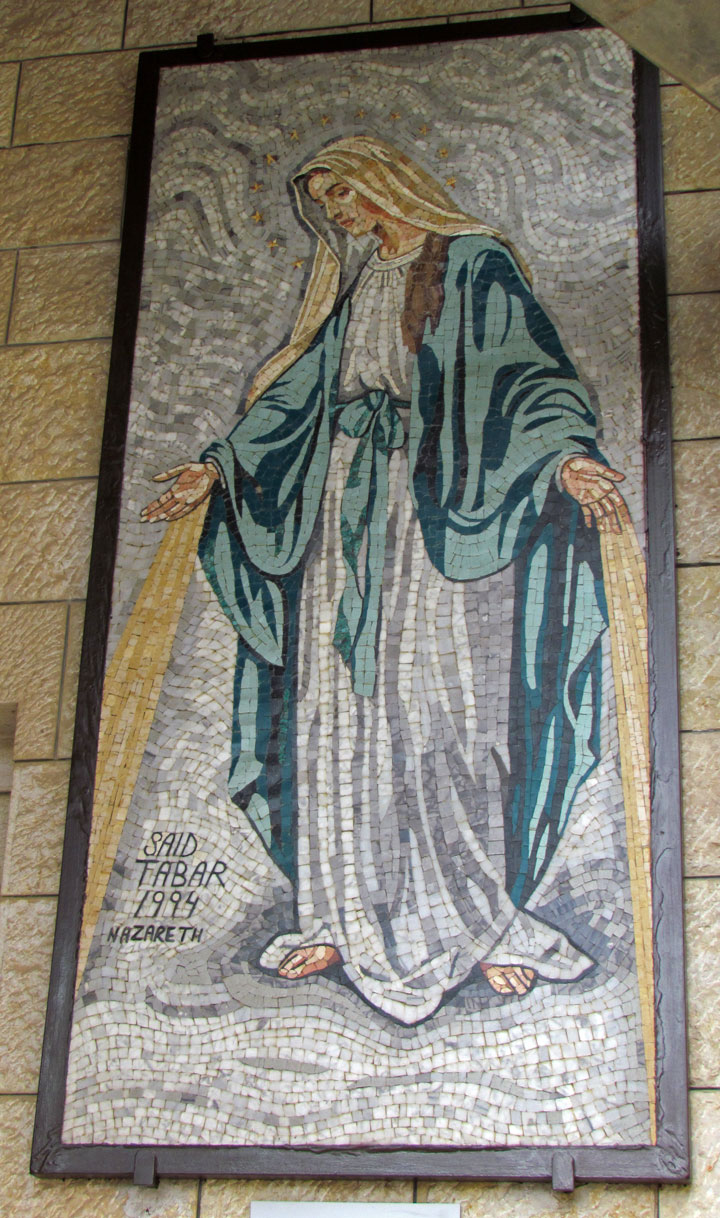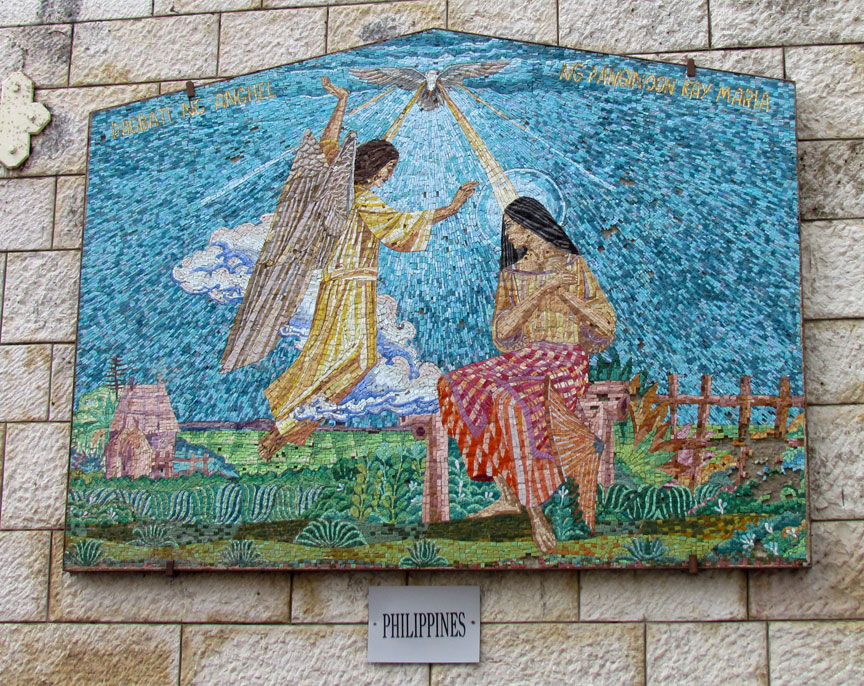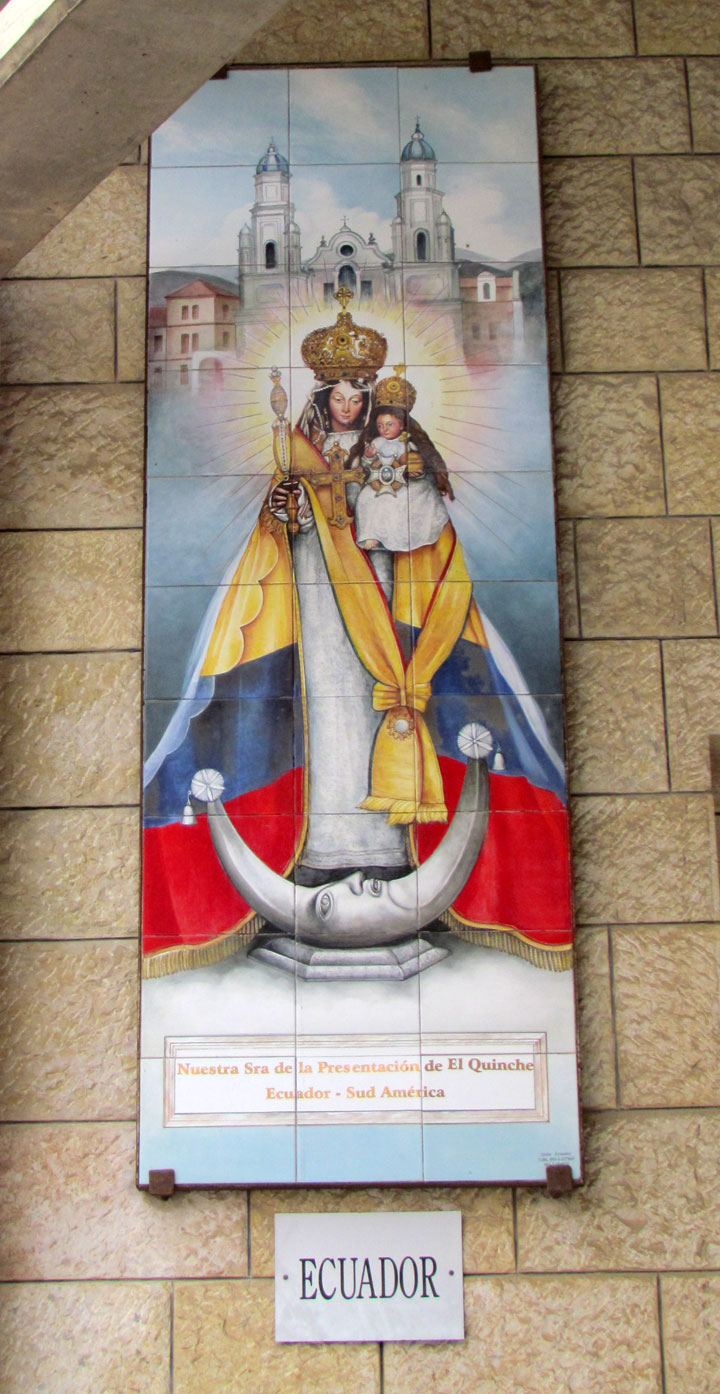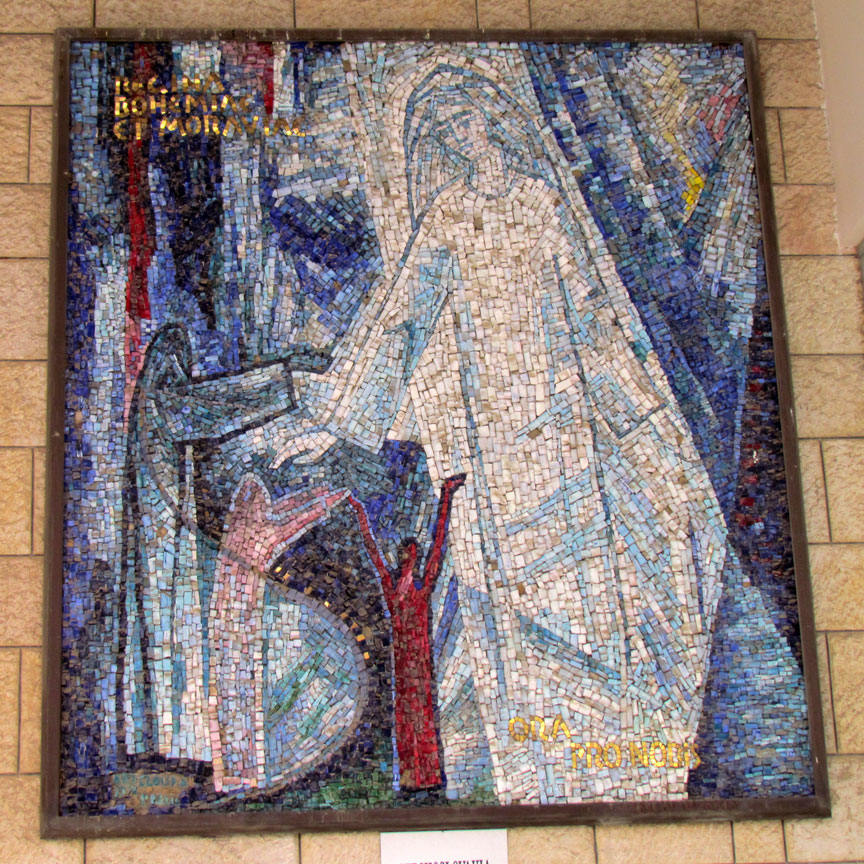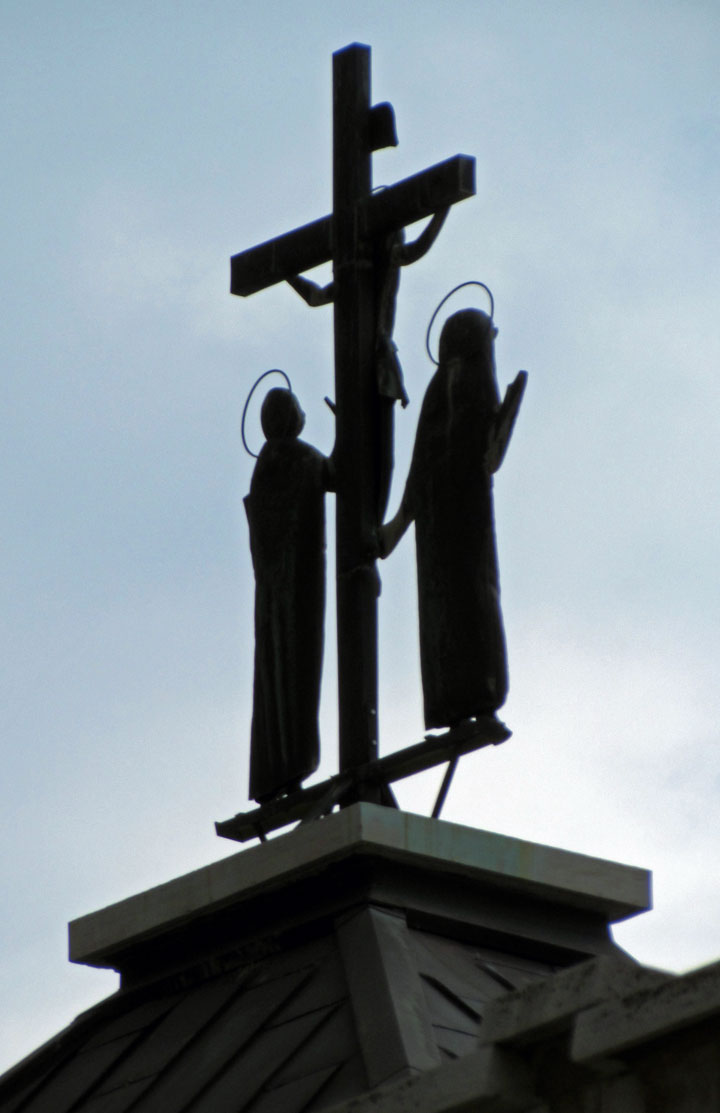

Church of the Annunciation
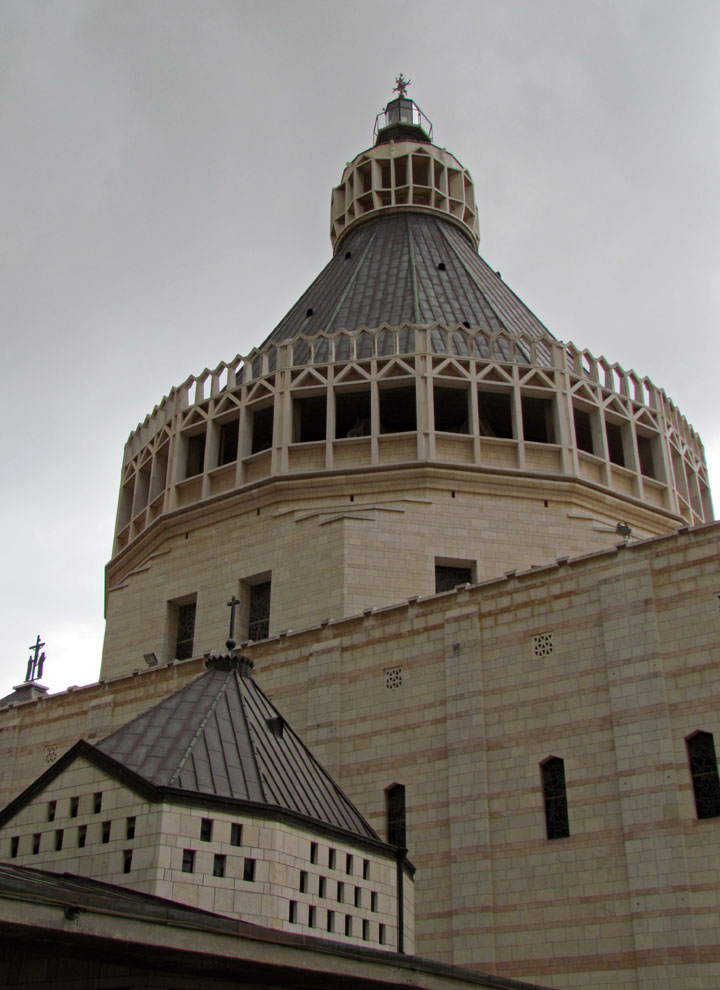
Church of the Annunciation
The Church of the Annunciation (Hebrew: כנסיית הבשורה, Arabic: كنيسة البشارة, Greek: Εκκλησία του Ευαγγελισμού της Θεοτόκου), sometimes also referred to as the Basilica of the Annunciation is a church in Nazareth, in modern-day northern Israel.

The church was established at the site where, according to Roman Catholic
tradition, the Annunciation took place. Greek Orthodox tradition holds that this
event occurred while Mary was drawing water from a local spring in Nazareth, and
the Greek Orthodox Church of the Annunciation was erected at that alternate
site.
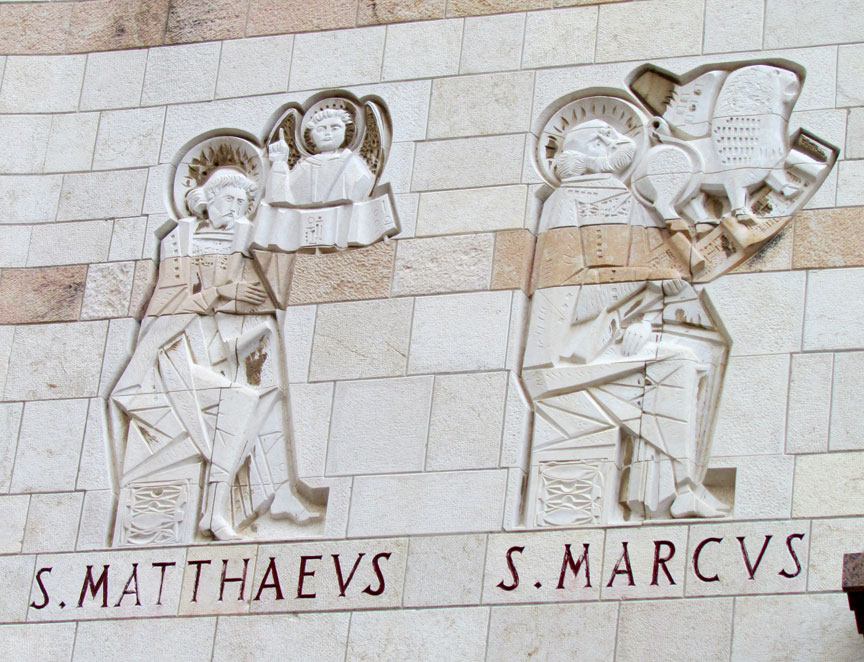
The current church is a two-story building constructed in 1969 over the site of
an earlier Byzantine-era and then Crusader-era church. Inside, the lower level
contains the Grotto of the Annunciation, believed by many Christians to be the
remains of the original childhood home of Mary. Under Roman Catholic canon law,
the church enjoys the status of a minor basilica. A historically significant
site, considered sacred within some circles of Christianity, particularly
Catholicism, the basilica attracts many Catholic, Anglican, and Eastern Orthodox
Christian visitors every year.
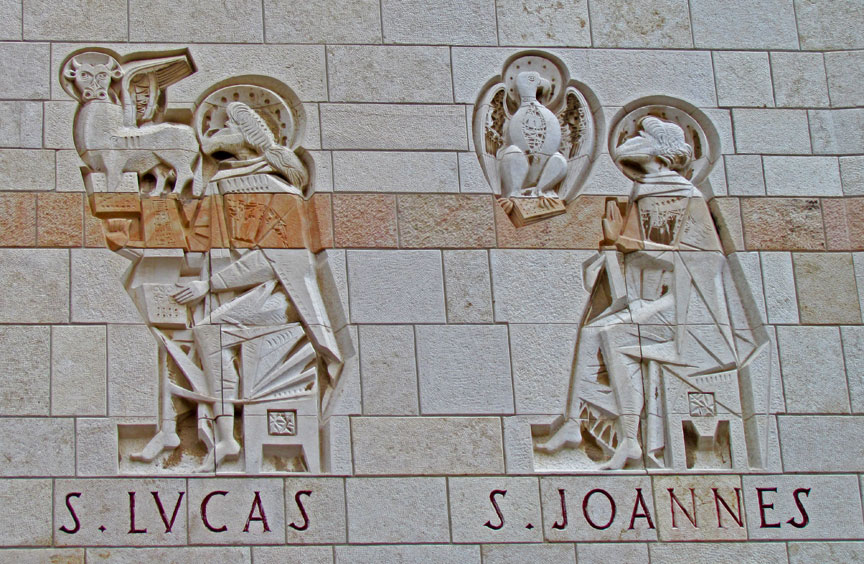
The first shrine was probably built sometime in the middle of the 4th century,
comprising an altar in the cave in which Mary had lived. A larger structure was
commissioned by Emperor Constantine I, who had directed his mother, Saint
Helena, to found churches commemorating important events in Jesus Christ's life.
The Church of the Annunciation was founded around the same time as the Church of
the Nativity (the birthplace) and the Church of the Holy Sepulchre (the tomb).
Some version of it was known to have still been in existence around 570 AD, but
it was destroyed in the 7th century after the Muslim conquest of Palestine.
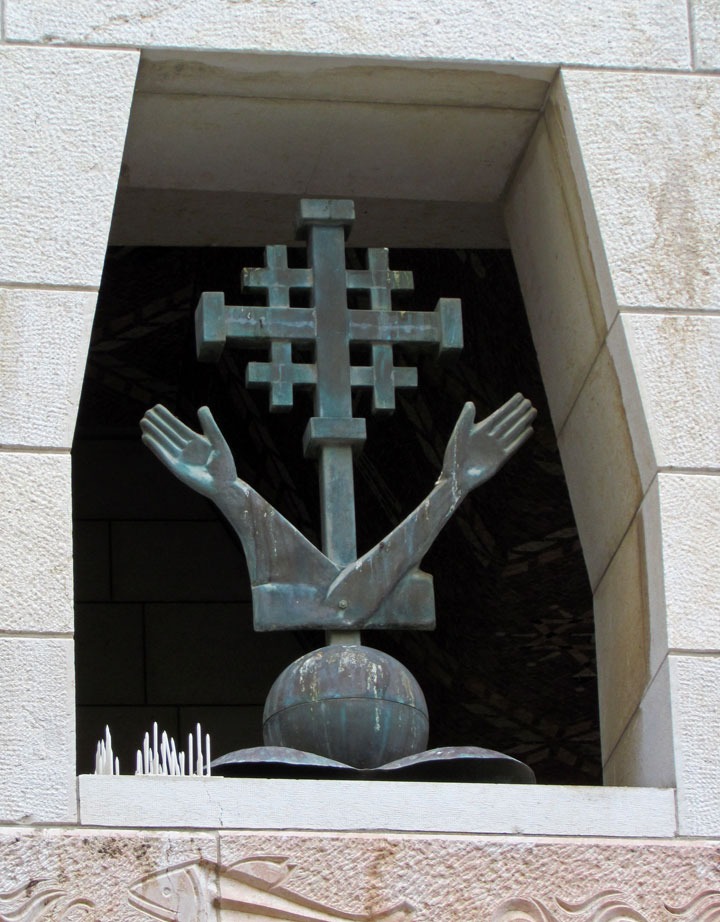
The second church was built over the ruins of the Byzantine era church during the Crusades, following the conquest of Nazareth by Tancred in 1102. The Crusader era church was never fully completed. Five Romanesque capitals carved by artists from northern France, and discovered during excavations in 1909, had not yet been installed in 1187 when news of Saladin's victory in the Battle of Hittin reached the city. Saladin granted permission to Franciscan priests to remain in Nazareth to oversee services at the church. In 1260, Baybars and his Mamluk army destroyed the church during their attack on Nazareth. A small number of Franciscans managed to stay in Nazareth until the fall of Acre in 1291. In the three centuries that followed, the Franciscans were in and out of Nazareth, depending on the local political situation, which was constantly in flux. Franciscan accounts of this period document their expulsion in 1363, their return in 1468 and a massacre of some of their members in 1542. Local Christian families with Franciscan support helped take care of the church as well during this period.
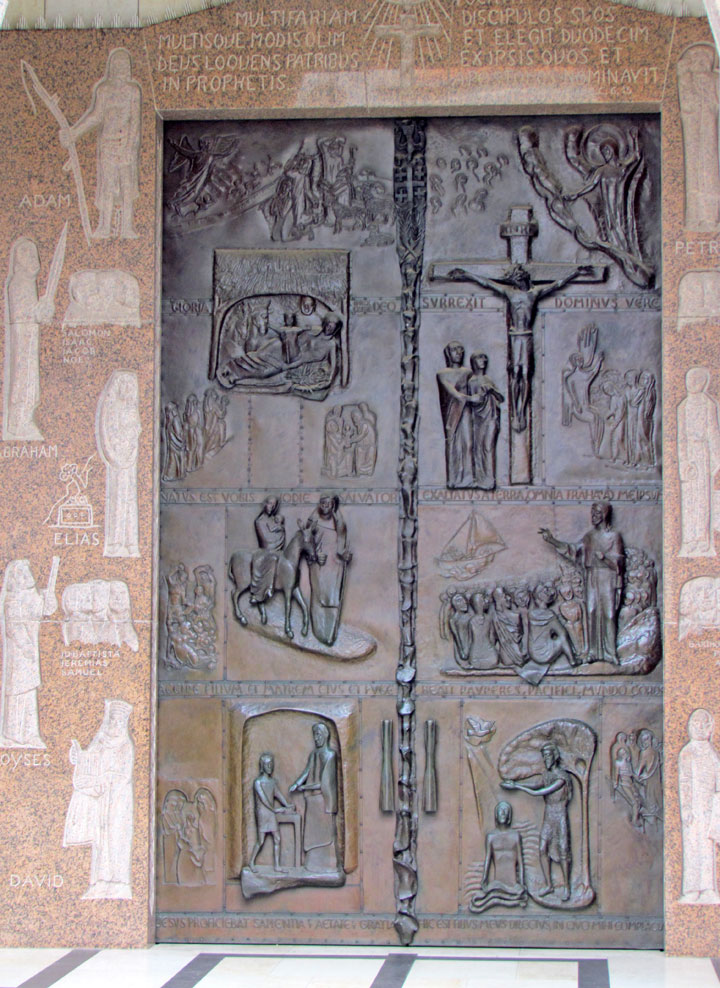
Emir Fakr ad-Din granted the Franciscans permission to return in 1620, at which
time they constructed a small structure to enclose the holy grotto that is
venerated as the house of Mary. In 1730, Dhaher al-Omar permitted construction
of a new church, which became a central gathering place for Nazareth Latin
community. The church was enlarged in 1877, and then completely demolished in
1954 to allow for the construction of a new basilica, which was completed in
1969. The new basilica was designed by the Italian architect Giovanni Muzio, and
built by the Israeli building firm Solel Boneh during the years 1960-69. Used by
the Latin parish, it remains under the control of the Franciscans. It is the
largest Christian sanctuary in the Middle East, and was dedicated in 1964 by
Pope Paul VI.
Text from Wikipedia
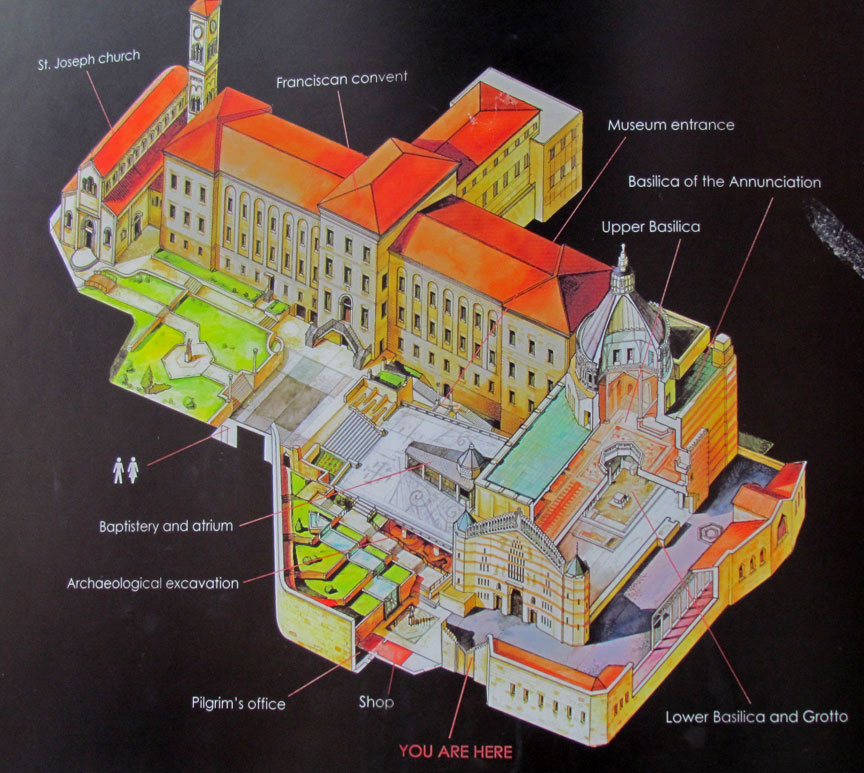


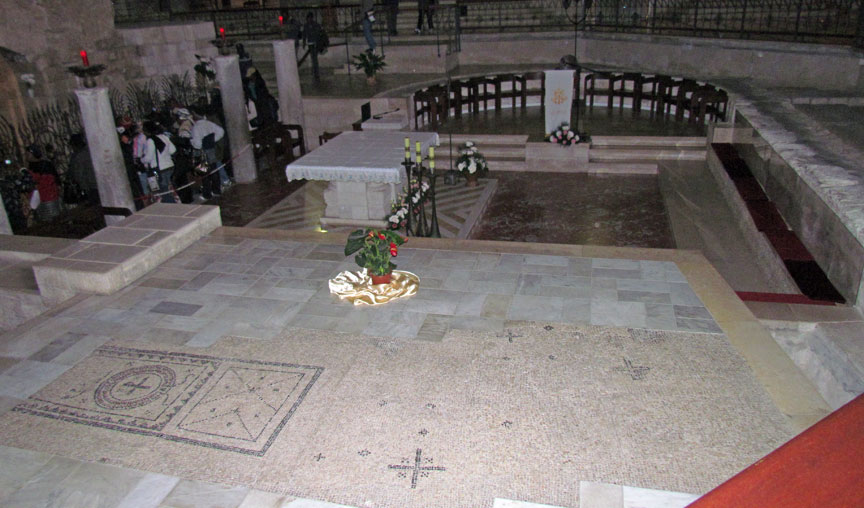
view above the grotto
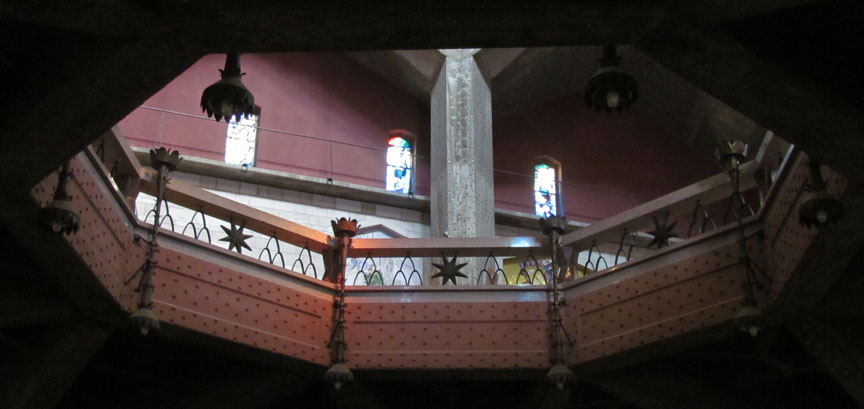

grotto canopy
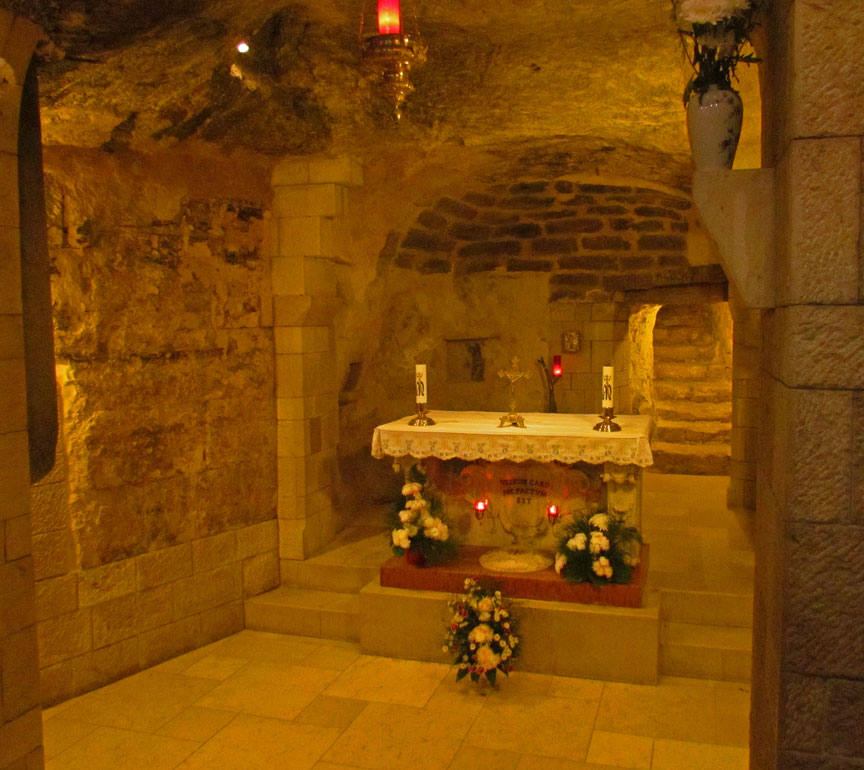
grotto crept at the site of the annunciation
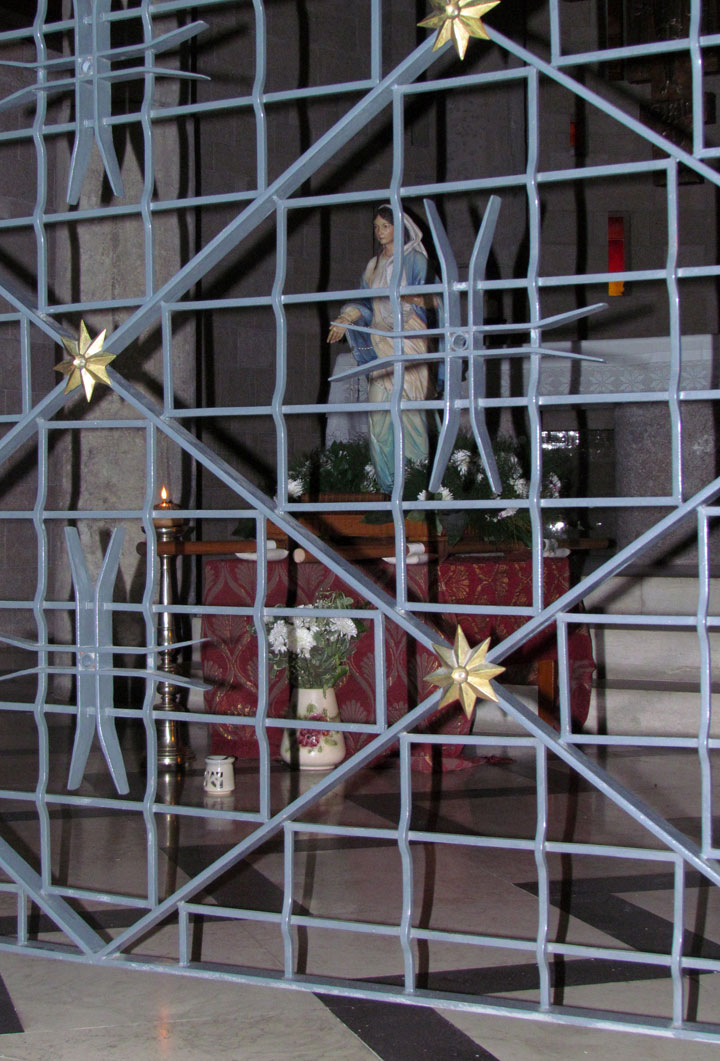
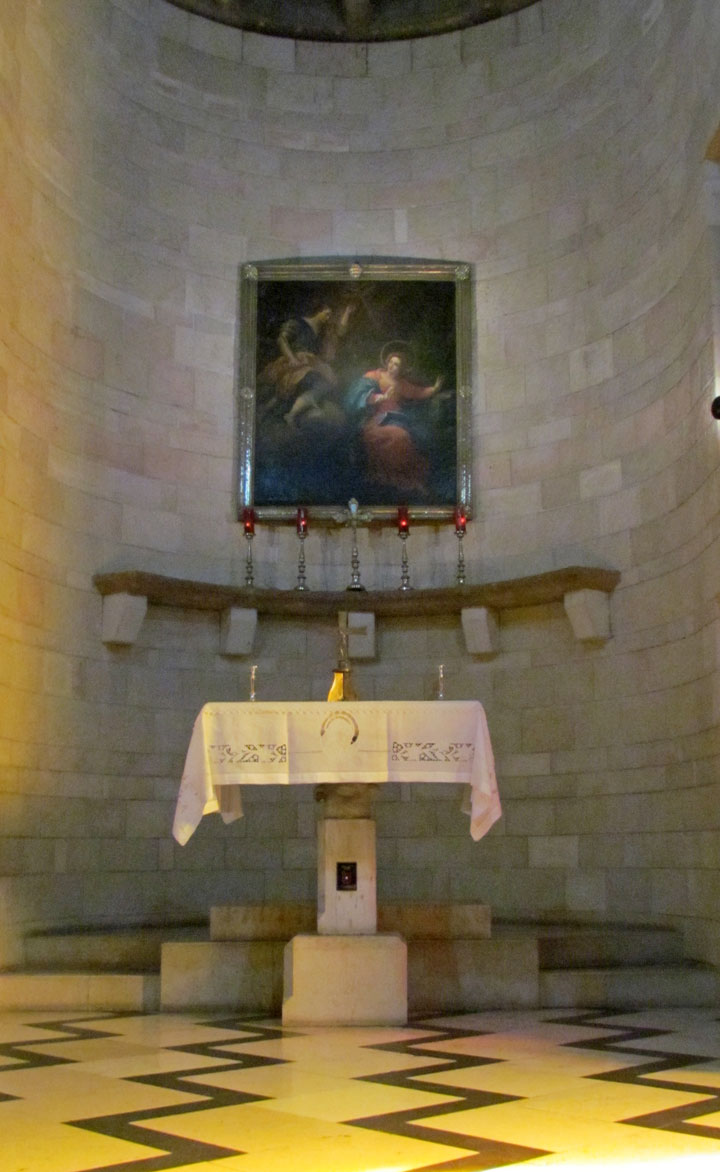
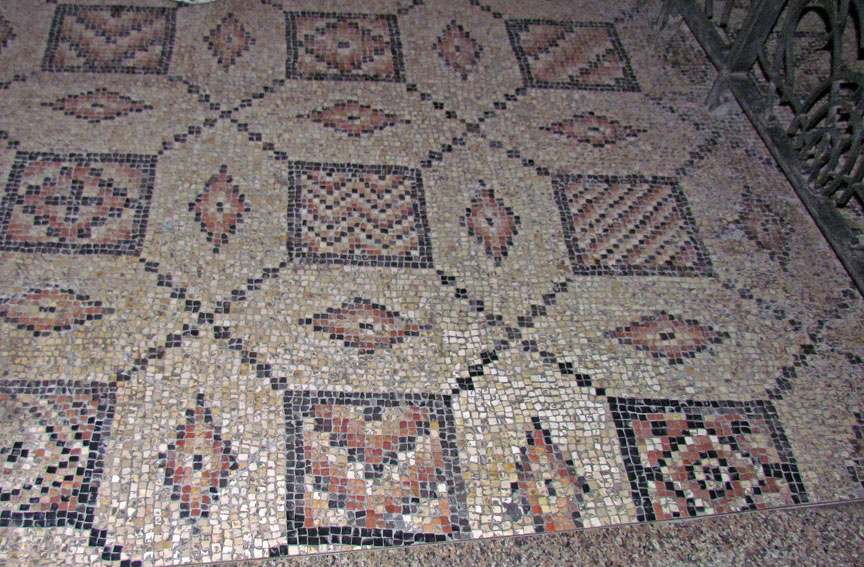
mosaic floor
